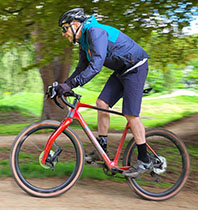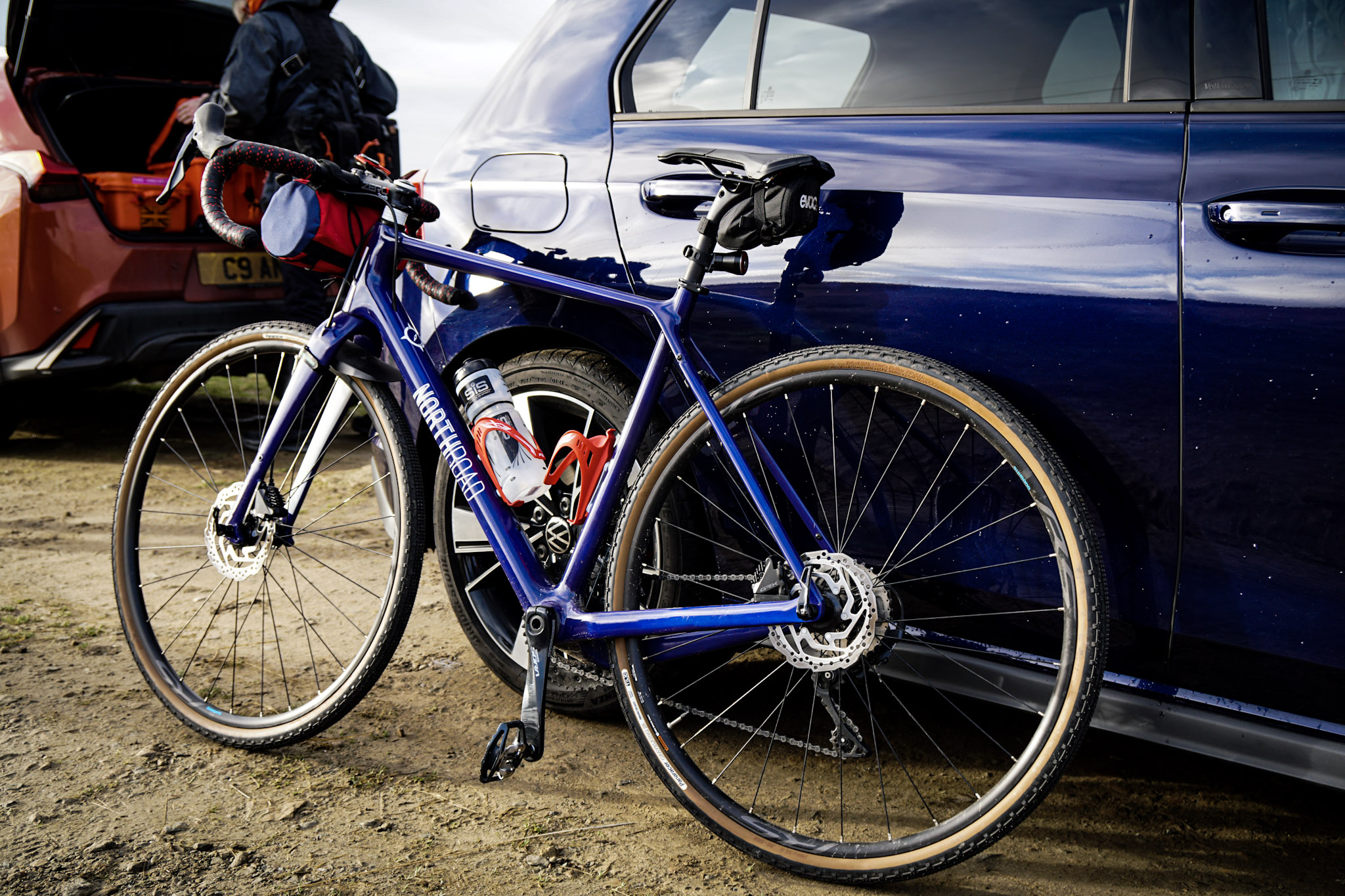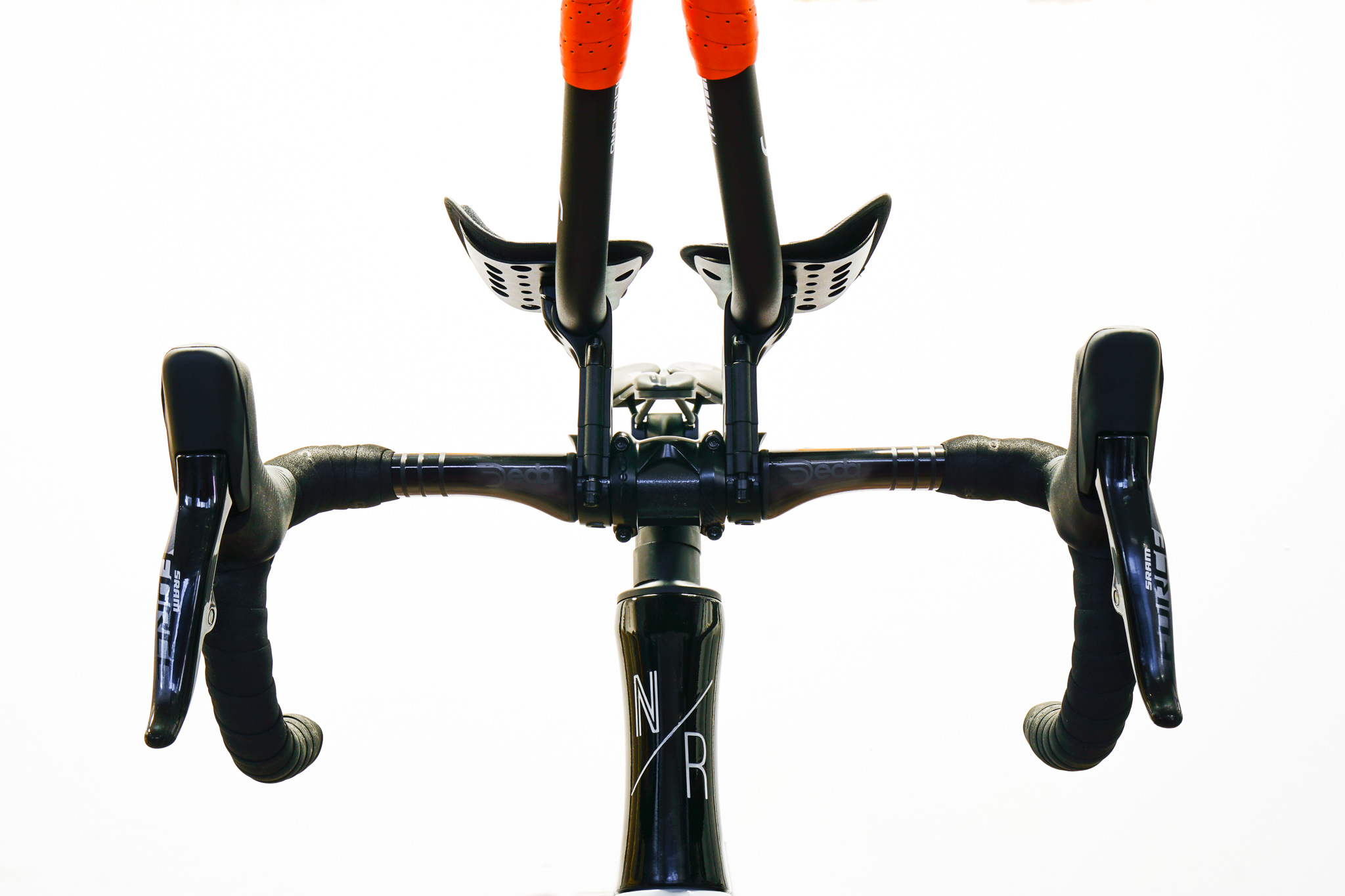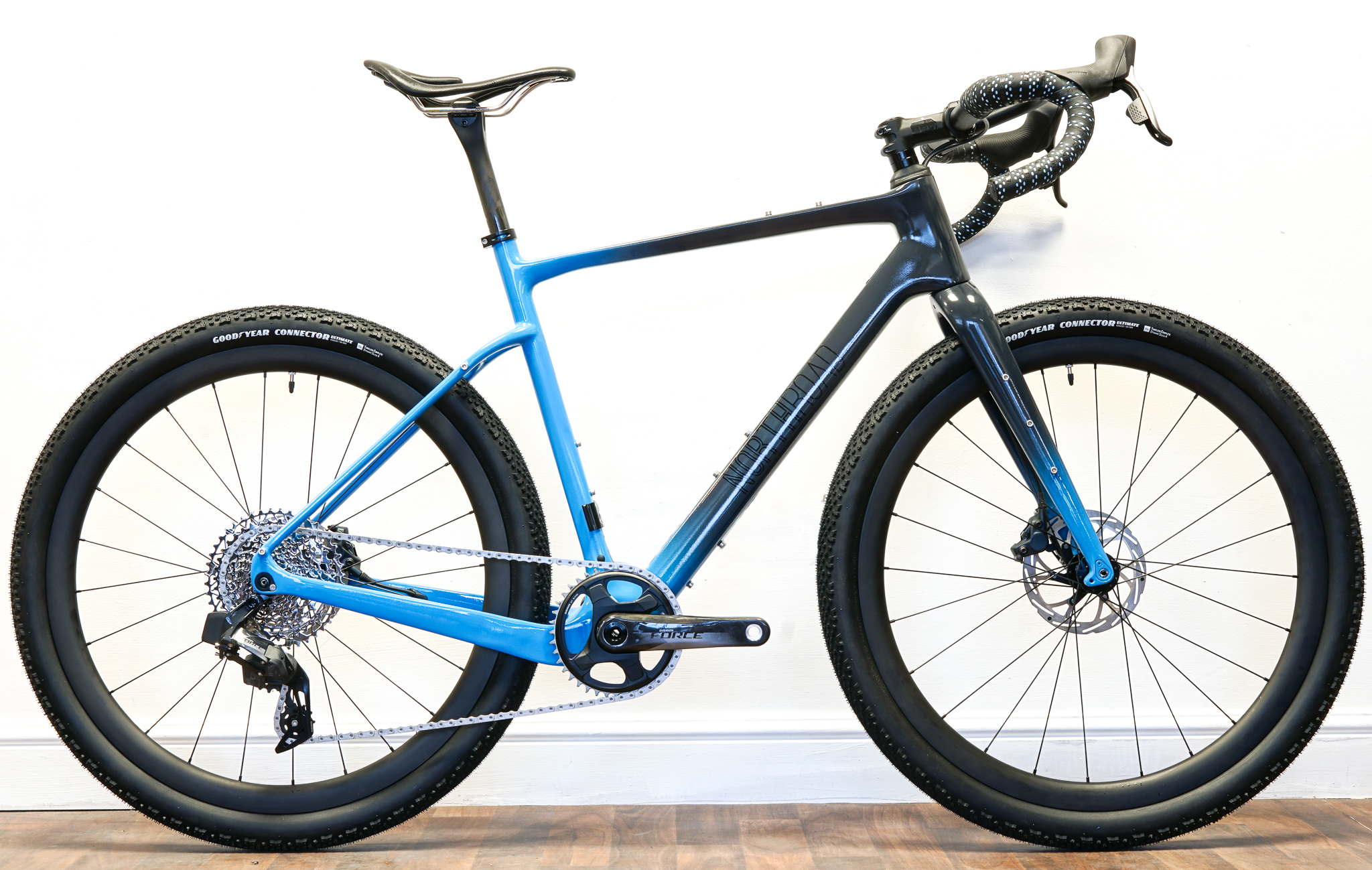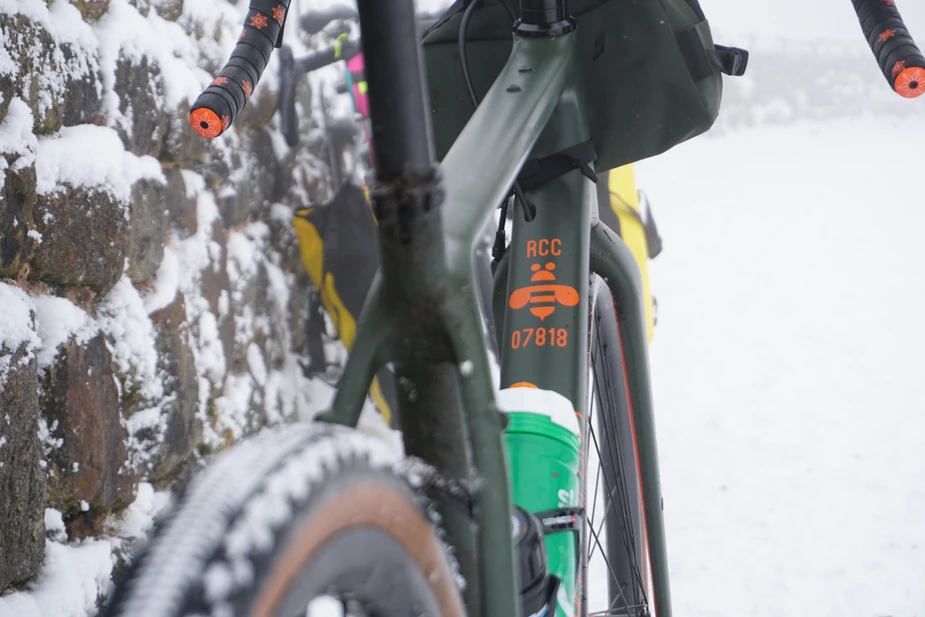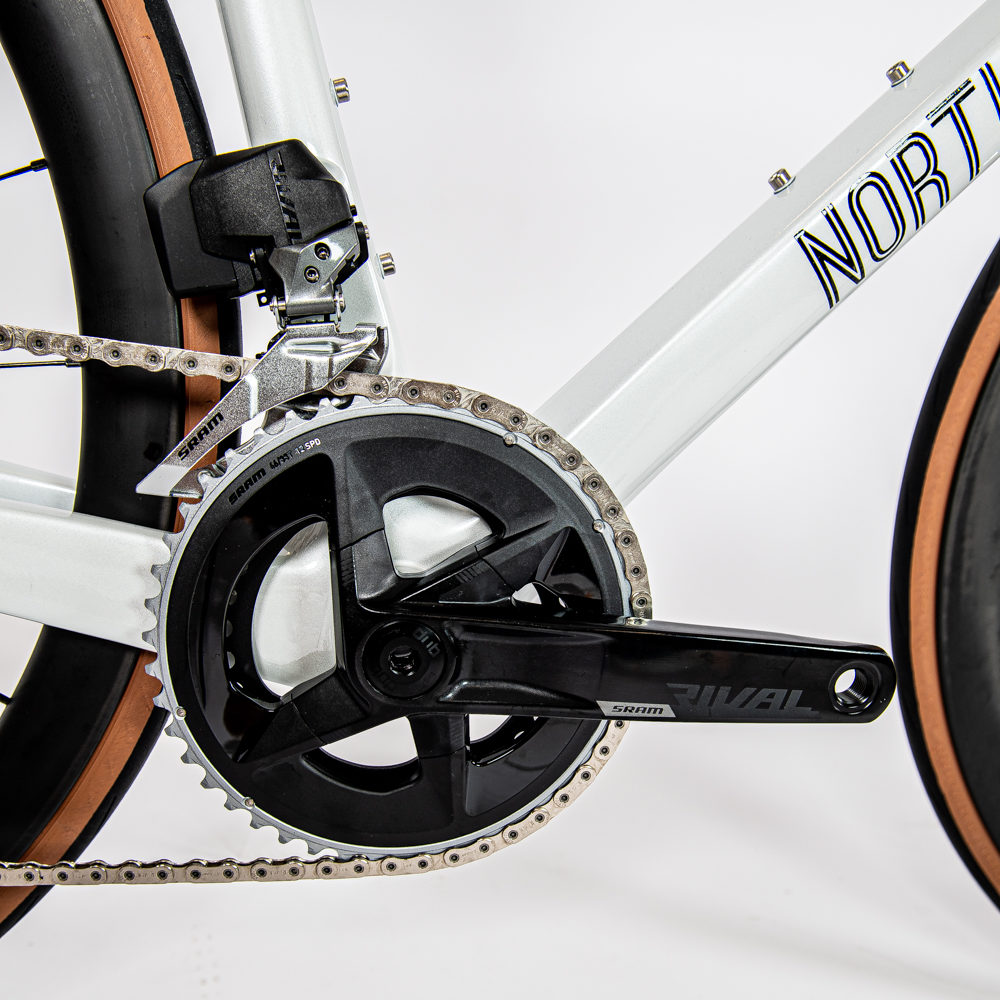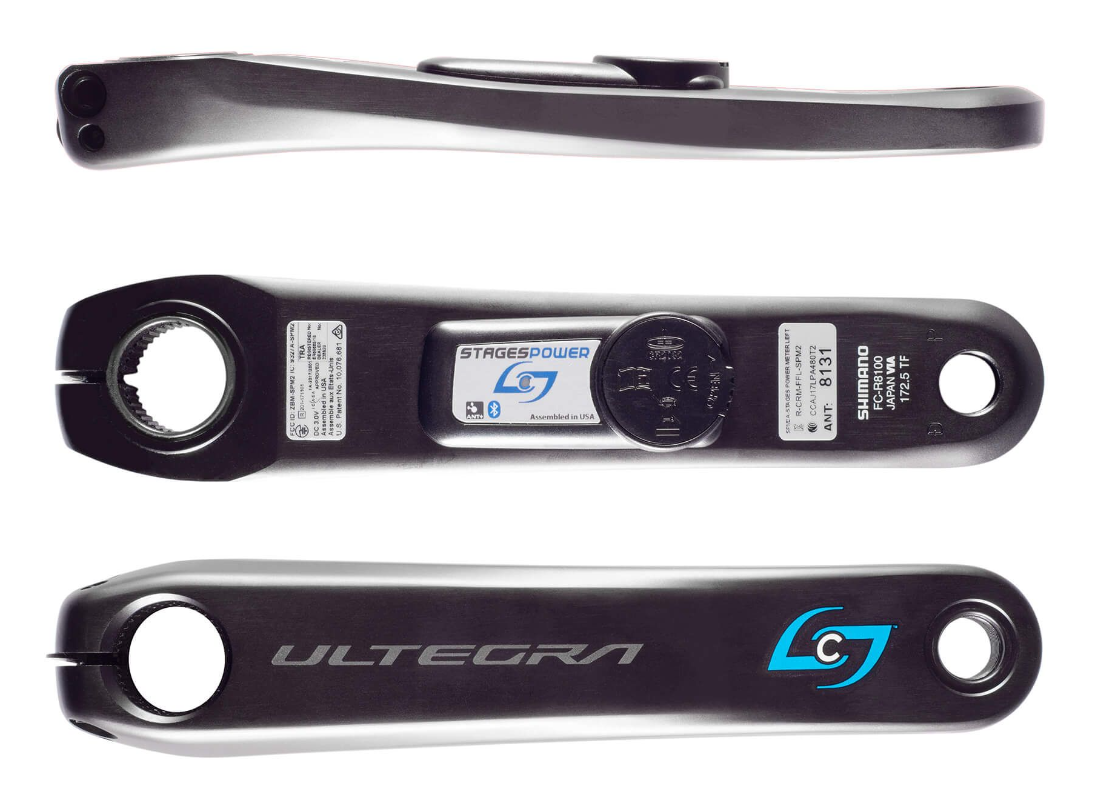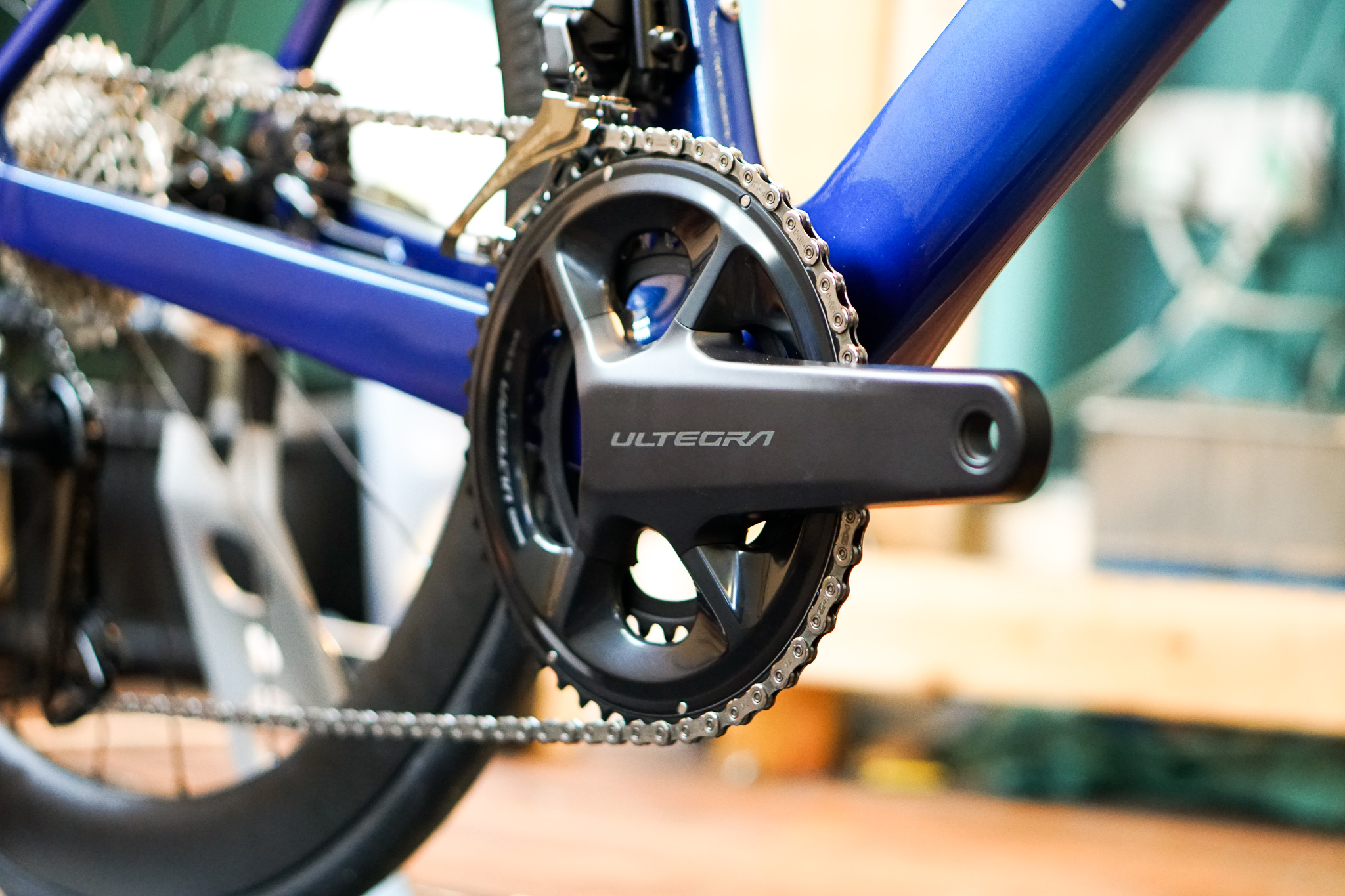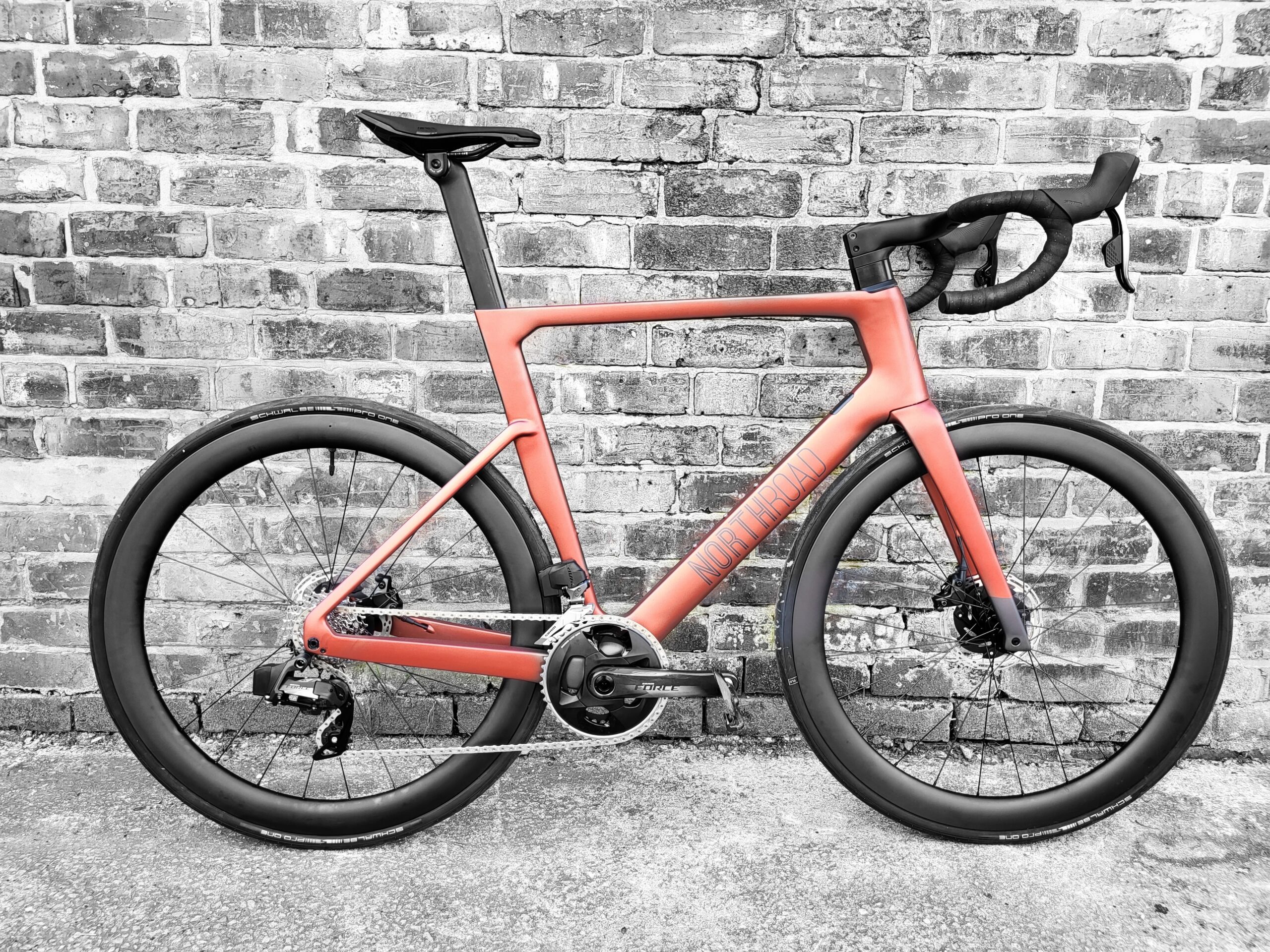Road Bike Groupsets. SRAM Round up 2023

The relative new kids on the block – and we mean relative. SRAM have been one of the “big three” groupset manufacturers since the late 80’s and they’ve come a long, long way.
SRAM takes a slightly different approach to shifting gears on drop bar bikes compared to Shimano and Campagnolo. The latter two use a seperate leaver for up-shifting and down-shifting. SRAM however utilise a single “double-tap” lever that you throw a short distance to change up a gear and a longer distance to change down. We remember when the prospect of this was a little intimidating but we promise, you’ll have it cracked before you reach your first mile. It’s super intuitive and if you’re as lucky as we are and often get to switch between bikes you might find yourself finding two levers annoying having used the double-tap system. What a time to be alive.
This is of course, talking strictly about the mechanical versions of the groupsets, but SRAM have taken a slightly different tact with their electronic shifting, too.
Shimano and Campagnolo use up and down-shifts on each shifter, a pair of buttons for the front derailleur and a pair for the rear. Simple.
SRAM, however, have one button/paddle on each side. The right button shifts up a gear, and the left down. In order to change the front chainring, you push/throw both paddles at the same time and it will change you to the one you’re not in. It’s clever.
And this is typical of SRAM. A lot of the design decisions don’t take into account the same sort of legacy as Shimano and Campagnolo. It feels like SRAM have been a bit bolder than the competition in recent years and it’s up to you to decide if you feel like that’s a good thing or not!
Like our Shimano round up, we’re going to start mid-table.
SRAM Rival 11 speed (mechanical)


The name isn’t a coincidence. We’ve mentioned elsewhere that Shimano 105 is the groupset of the people. Legend (and in fact, a couple of interviews, too) suggests that SRAM Rival was named as to directly pit it against Shimanos best value offering, and unsurprisingly there’s very little between them.
They’re both 11 speed. They’re both within a few grams of each other. They both work flawlessly. To choose between them is to leverage the luxury of subjective analysis. Stick with us here.
To some SRAM provides better feedback of shifting at the hands. You can’t miss a shift, you can feel it and hear it. To others, It’s agricultural and clunky, and Shimano’s delicate snick is preferable.
To some, SRAM brakes offer better modulation and a more linear braking experience. To others, there’s too much lever throw and Shimano has a faster ramp up.
To some, SRAM double tap means less moving your hands around and is slightly lighter. To others It’s easier to miss-fire and having two levers rather than one is easier to manage.
See?
The good news is, you can’t really go wrong with either Shimano 105 or SRAM Rival. Come and speak to us, feel how they feel in your hands, and choose the one that’s on the best offer. (Look at us, providing actual consumer advice).
SRAM Rival AXS 12 speed eTap
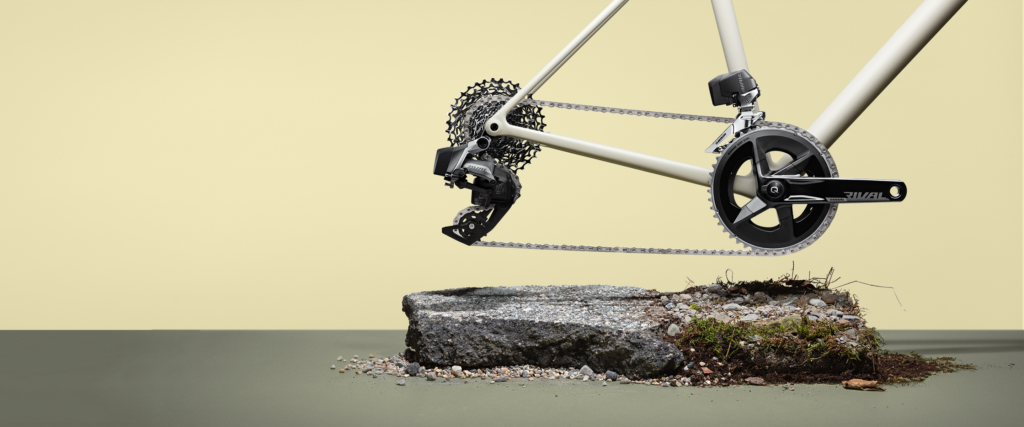

Providing SRAMs entry level into electronic shifting, the AXS denomination is something that will follow through the higher end groupsets. There’s a bunch of funky technical reasons it’s called AXS but for now we’re safe to use this to refer to the fact they go “Zzzt” when you change gear.
What is worth mentioning, however, is that unlike Shimano’s electric gear system, SRAM AXS is completely wireless. The Front and Rear derailleurs connect to the shifters through a proprietary wireless connection system that behaves awfully like bluetooth – but it’s not called bluetooth. Either way, in our experience it connects instantly and behaves impeccably.
SRAM Rival AXS is currently the cheapest way to get electronic shifting. Don’t get us wrong, it’s certainly not cheap, but it’s a damn site cheaper than the entry level electronic options of even just 2 years ago – even with the price increases the industry has seen.
SRAM take a slightly different approach to gearing, and that’s evident here as well. The 12 speed cassettes have a 10 tooth smallest cassette, which doesn’t sound like a major difference but compared the 11t of Shimano that’s a whole 10% “faster”. With this, comes the ability to use smaller chainsets. 46-33 is the semi-compact equivalent that most of us will be using currently. These chainsets are lighter (smaller=lighter) and technically more aero – although we’ll admit we raised an eyebrow at that, too.
We’ve used it, and the shifting is as smooth as any of the competition. The brakes across all of the AXS systems are a marked improvement compared to the mechanical options too, with much more feedback at the lever and less throw before engagement.
SRAM Force AXS eTap


It would be easy to write “as above, but lighter” here – but there are a few nuances worth mentioning. First is the rear derailleur. The jump from SRAM Rival AXS etap to SRAM Force AXS eTap gains you some extra technology in the rear changer. At Rival level you’re getting a spring system to create the tension needed to keep the chain on the right sprocket – much the same as derailleur systems of the last few decades. However, when you make the jump to force, you get an additional neat bit of technology called Orbit that uses a “silicon fluid damper with a one way valve” that creates resistance against the jockey wheel cage when going over bumps. Because it’s fluid based it’s naturally exponential so the harder the bump, the more resistance it applies.
What does this mean in the real world?
Quieter drivetrain, reduced chain slap, and better chain retention. We have anecdotally found slightly smoother shifting too but not sure if this is as a result of the chain retention.
Now, onto weight. Force does make marked savings against rival in certain areas. We were astounded when we found out a pair of Force shifters are almost half the weight of the Rival equivilent. That’s ~400 grams. In the cycling world, that’s massive! To which we will say, SRAM Rival is excellent, but if you’re racing or time keeping, Force is a worthwhile upgrade.
The chainset also looks loads sexier – but that’s just like, our opinion.
SRAM Red AXS eTap


The Creme de la creme. Much like it’s Japanese cousin, Dura-Ace, SRAM Red marks the lightest and most expensive offering from the Americans – and also like it’s Japanese cousin doesn’t really represent any major performance advantages unless you’re chasing every gram. Outside of racing or really treating yourself (which is something we’re experts at) We’d usually recommend Force giving the best high end value.
SRAM Red has been all but crippled by ill availability through the pandemic but we’re almost thankful for the case as it seems they have focussed energies on the more wallet friendly options with availability of Rival being much better than alternatives.

